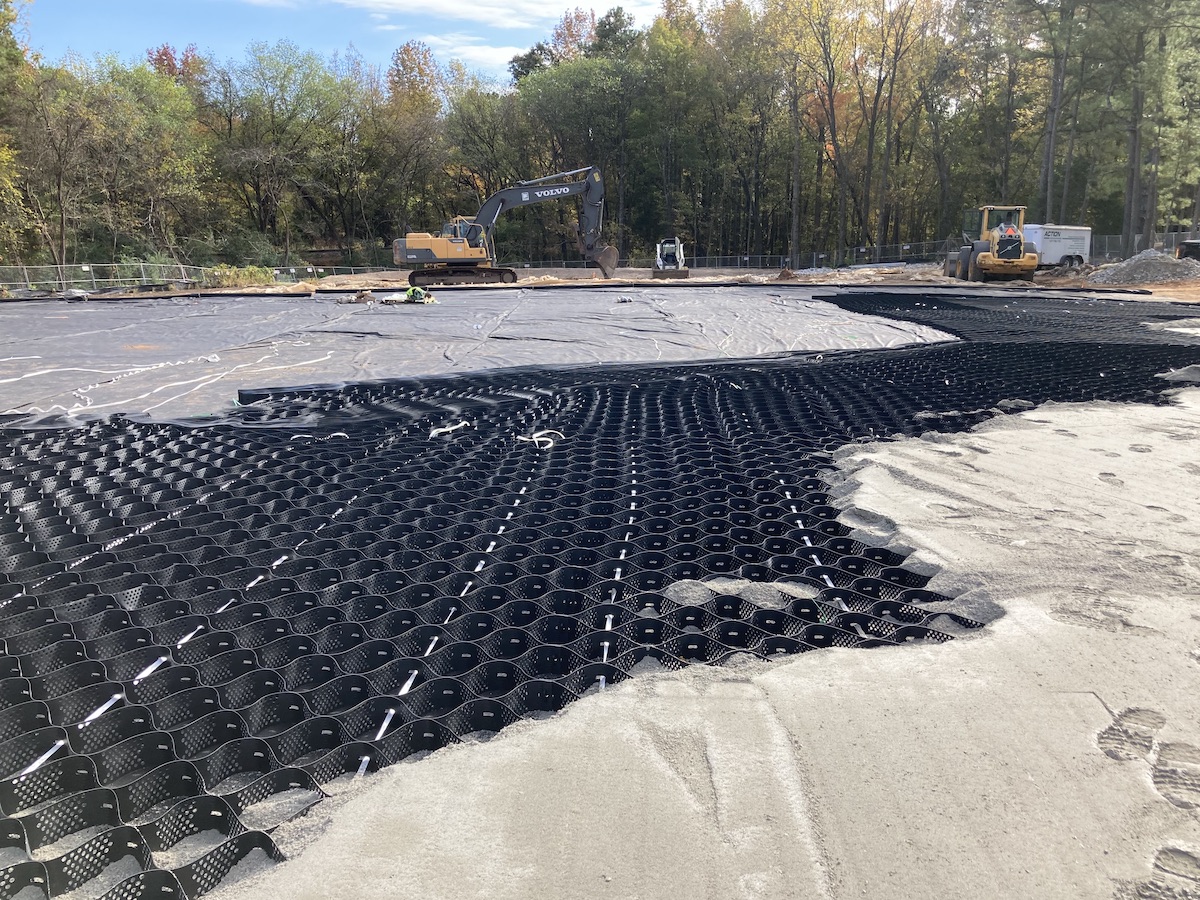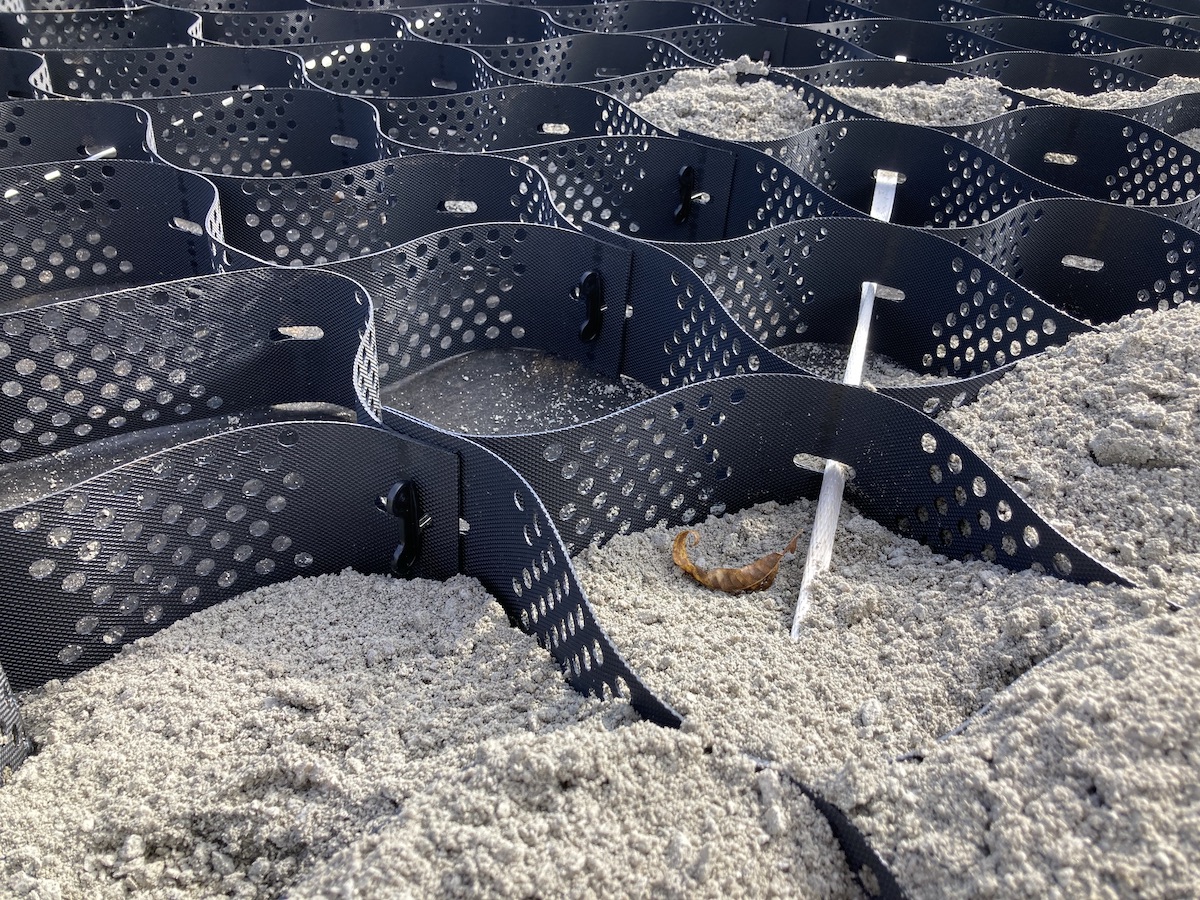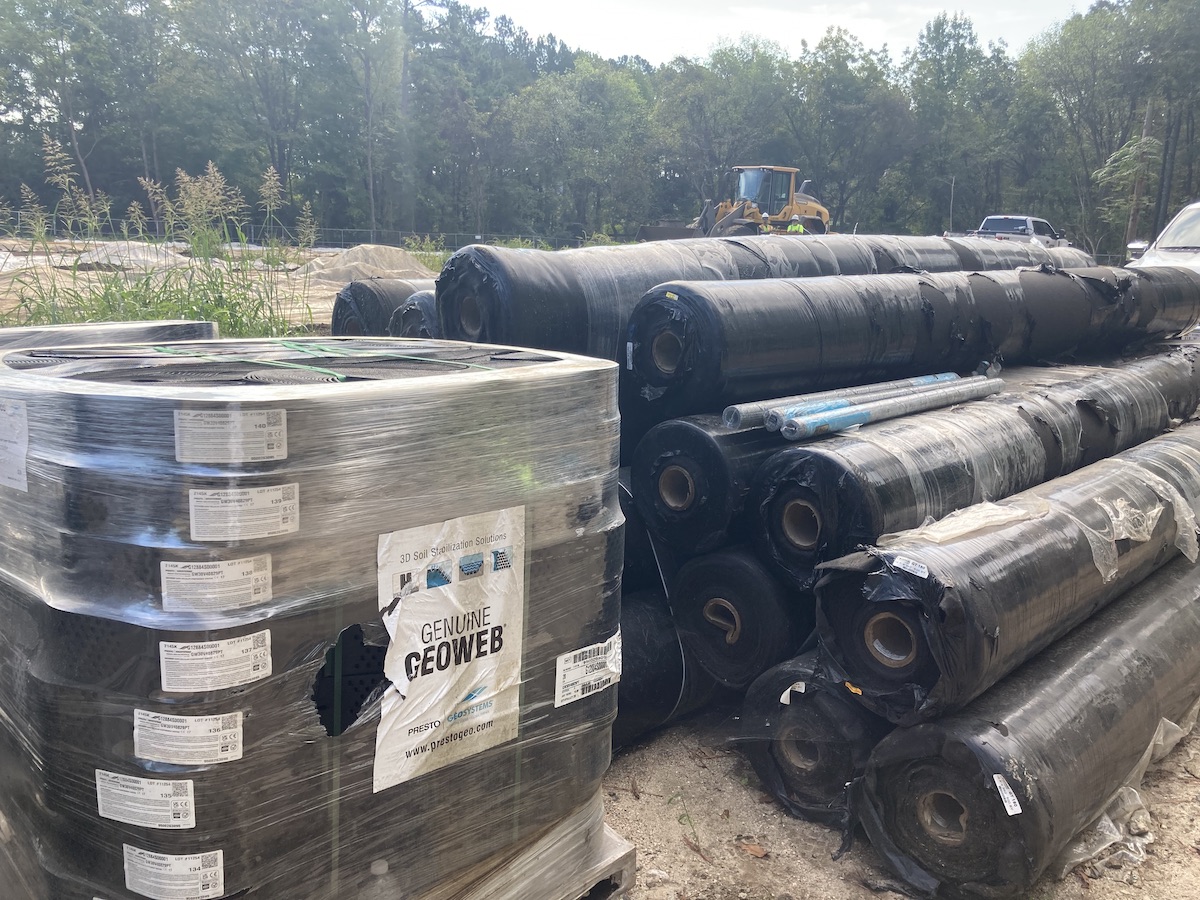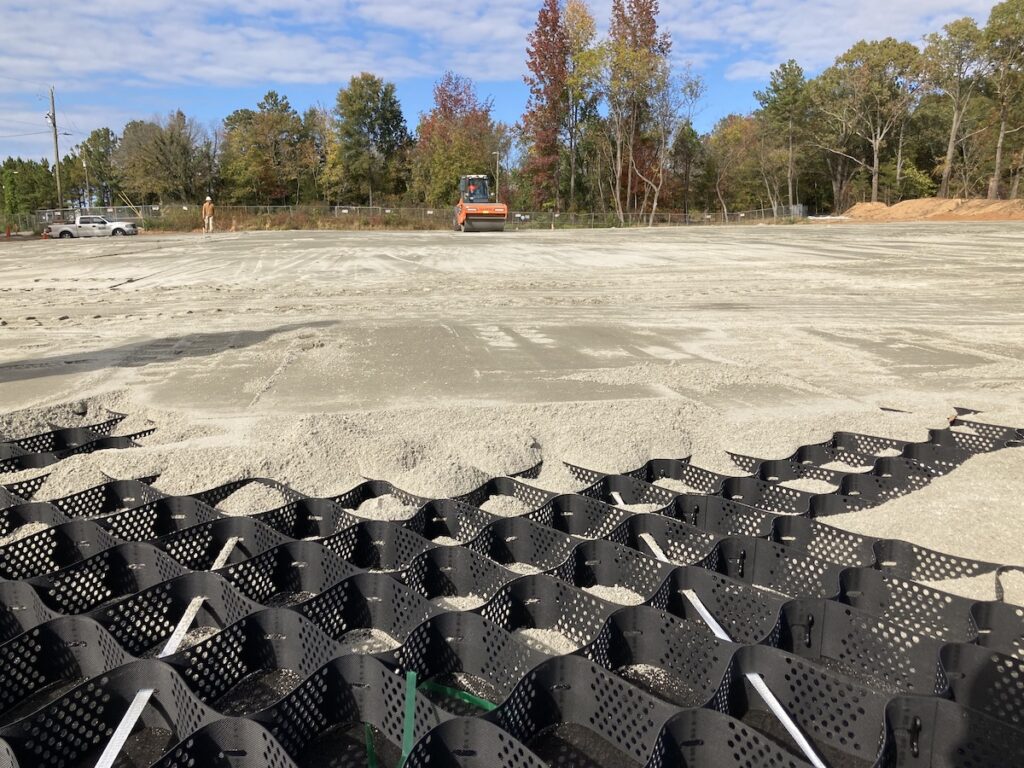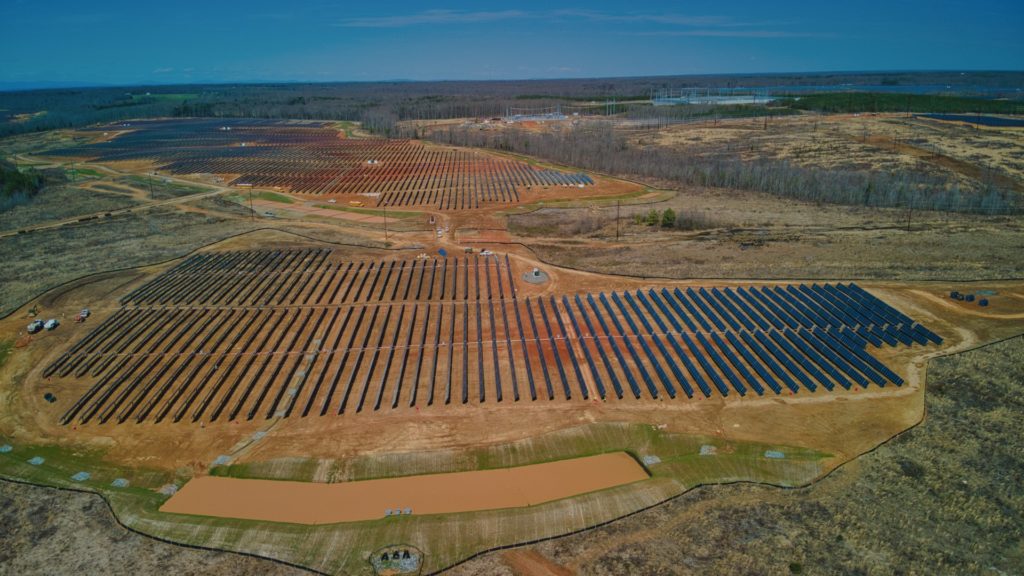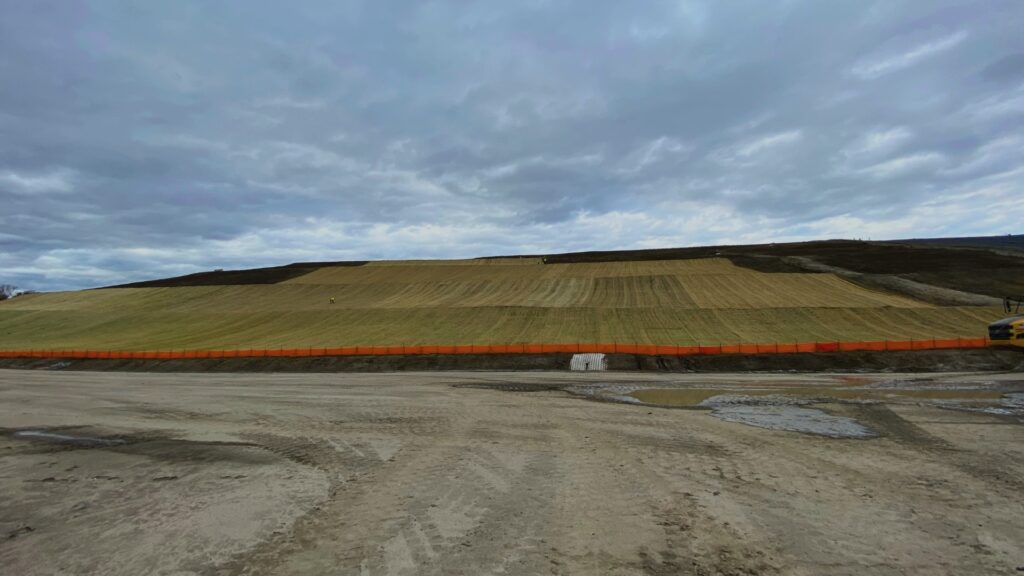Soil Cover System for Pre-Regulatory Landfill
Project Details
Sector:
Government
Location:
Franklinton, NC
Engineer:
Froehling & Robertson
Environmental Contractor:
Action Environmental LLC
Manufacturer:
Presto Geosystems
Critical Products:
GEOWEB®
About the Pre-Regulatory Landfill
The Franklinton City Dump is a pre-regulatory landfill located in Franklin County, North Carolina. The dump operated from sometime before 1955 until 1974 when it was formally closed.
The North Carolina Department of Environmental Quality describes a pre-regulatory landfill as “any land area, whether publicly or privately owned, on which municipal solid waste disposal occurred prior to January 1, 1983, but not thereafter, and does not include any landfill used primarily for the disposal of industrial solid waste.”
In 2007, North Carolina law established the Pre-Regulatory Landfill Unit within the Inactive Hazardous Sites Branch to address the remediation of these sites.
The Franklinton Dump covers approximately 4.9 acres and includes an inundated quarry. Single-family homes, a mobile home park and agricultural tracts surround the site.
Pre-Regulatory Landfill Remediation
Remediation of pre-regulatory landfills is thoroughly outlined by the North Carolina Department of Environmental Quality. In short, the program includes a multi-phase approach to thoroughly access the site, analyze the findings and remediate the contaminated area.
The Pre-Regulatory Landfill Program phases include:
- Remedial Investigation Phase
- Remedial Action Phase
- Remedial Action Plan Design
- Public Comment
- Remedial Action Implementation
Remedial Action Phase
The goals of the Remedial Action Phase (RAP) for Franklinton Landfill included construction of erosion control measures to perform remediation, clearing the upper section of the waste disposal area, removing surface waste from the waste disposal area and inundated quarry, placement of an engineered cover system and amending the top soil to support sustainable vegetative cover.
GEOWEB Cover System
The GEOWEB® Soil Stabilization System (geocells) was recommended by Froehling and Robertson for the engineered cover system. The cellular confinement system covered the final waste area limits and “is intended to cover the waste and isolate those underlying materials from exposure, to promote uniform stormwater drainage from the waste disposal areas without ponding on their surfaces, and to resist erosion.”
The GEOWEB® Geocell System was chosen as the cover system due to its significant operational advantages:
Design and Installation
102,810 square feet of 4-inch GEOWEB GW30V (mid-sized geocell) was installed over an 8-ounce nonwoven geotextile fabric. The vegetated system was filled with approximately 2,320 tons of imported structural fill and covered with approximately 2,500 tons of imported topsoil.
The GEOWEB® geocell panels were connected with ATRA® Keys and secured with Woven Polyester Tendons and ATRA® Tendon Clips.
Explore More Projects
Bidding a landfill project?
Contact our sales team for pricing.




